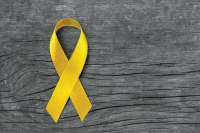Preserving Cherokee tradition
Anthropologist James Mooney (1861-1921) devoted his life to detailing various aspects of the history, material culture, oral tradition, language, arts, and religion of the Eastern Cherokee, Cheyenne, Sioux, Kiowa, and other tribes, adding a new dimension to the writing of Indian history by combining various methods of research and utilizing sources from the Indians themselves.
He is most widely remembered for his research and writing on the Ghost Dance Religion. But some of his most inspired work took place in the mountains of Western North Carolina, where he lived among the remnant Eastern Band of Cherokees [now officially designated as the Eastern Band of Cherokee Indians] for parts of four years from 1887 through 1890 and for interim periods thereafter through 1916. He was the first serious student of that then neglected tribe and probably the most influential. According to University of Georgia anthropologist Charles Hudson, States, Mooney “possessed just the right combination of persistence and tact to do superb fieldwork,” allowing him to publish works on the Cherokee without which readers “would know next to nothing about the world view of the southeastern Indians.”
The major works dealing with the Eastern Band that Mooney saw through the press during his lifetime were Sacred Formulas of the Cherokees (1891) and Myths of the Cherokee (1900). Both appeared as Bureau of American Ethnology publications. They provide insights into the interrelated themes of tribal history, lore, and ritual Mooney sought to explore and correlate throughout his career.
In 1885, Mooney was working for the Bureau of American Ethnology at the Smithsonian Institution in Washington, D.C. That summer he met Nimrod Jarrett Smith, principal chief of the Eastern Band, who was often in Washington lobbying for official recognition of the tribe in North Carolina as a legal entity or for responsible use of tribal resources. He warmed to Mooney and invited him to visit Cherokee.
The 26-year-old budding ethnologist who disembarked at the rail and telegraph station at present day Whittier, on the Tuckasegee River about six miles south of Yellow Hill (as Cherokee was then known), was “a small, agile man with long dark-brown hair and large gray eyes,” about five feet, four inches in height. He wore a mustache and sometimes kept his hair shoulder-length. Not physically imposing, Mooney’s greatest asset, as one of his co-workers noted much later, was an “intense emotional attitude.”
Mooney credits “nearly three-fourths” of the stories related in Myths of the Cherokees to a shaman named Swimmer, who lived in the traditional Big Cove community (which remains a bastion of Cherokee traditionalism to this day). Once the ethnologist gained Swimmer’s trust they spent “day and night, talking and writing” about “the whole range of Indian life and thought.” Shortly after the great medicine man’s death, Mooney penned an elegiac tribute to his friend: “He died in March, 1899, aged about sixty-five, and was buried like a true Cherokee on the slope of a forest-clad mountain. Peace be to his ashes and sorrow for his going, for with him go about half the traditions of his people.”
Related Items
The 576-page Myths of the Cherokees consists of seven parts: “Introduction,” “Historical Sketch of the Cherokee,” “Notes to the Historical Sketch,” “Stories and Storytellers,” “The Myths,” “Notes and Parallels,” and “Glossary.” The mythic materials are further subdivided into seven groupings: “Cosmogonic Myths” pertaining to the origins of the universe and man; “Quadruped Myths:” “Bird Myths:”; “Snake, Fish, and Insect Myths:”; “Wonder Stories” pertaining to supernatural beings and places; “Historical Traditions:” and “Miscellaneous Myths and Legends.”
The Cherokees were exceptional observers of bird life long before the first Europeans arrived and began to survey the avifauna of North America. Mooney discovered that their stories and legends were saturated with bird imagery. These selections concerning eagle lore are from a general overview of “The Bird Tribes” (Bird Myth 35) and “The Eagle’s Revenge” (Bird Myth 47).
The eagle is the great sacred bird of the Cherokee, as of nearly all our native tribes, and figures prominently in their ceremonial ritual, especially in all things relating to war ... The eagle must be killed only in the winter or late fall after the crops were gathered and the snakes had retired to their dens. If killed in the summertime a frost would come to destroy the corn, while the songs of the Eagle dance, when the feathers were brought home, would so anger the snakes that they would become doubly dangerous. Consequently the Eagle songs were never sung until after the snakes had gone to sleep for the winter ....
When the people of a town had decided upon an Eagle dance the eagle killer was called in, frequently from a distant settlement, to procure the feathers for the occasion. He was paid for his services from offerings made later at the dance, and as the few professionals guarded their secrets carefully from outsiders their business was a quite profitable one. After some preliminary preparation the eagle killer sets out alone for the mountains, taking with him his gun or bow and arrows. Having reached the mountains, he goes through a vigil of prayer and fasting, possibly lasting four days, after which he hunts until he succeeds in killing a deer. Then, placing the body in a convenient exposed situation upon one of the highest cliffs, he conceals himself near by and begins to sing in a low undertone the songs to call down the eagles from the sky. When the eagle alights upon the carcass, which will be almost immediately if the singer understands his business, he shoots it, and then standing over the dead bird, he addresses to it a prayer in which he begs it not to seek vengeance upon his tribe .... On reaching the settlement, the feathers ... are hung up in a small, round hut built for this special purpose near the edge of the dance ground ... and known as the place “where the feathers are kept,” or feather house .... The eagle being regarded as a great ada’wehi [i.e., magician or supernatural being], only the greatest warriors and those versed in the sacred ordinances would dare to wear the feathers or to carry them in the dance.”
And further on in the book:
Once a hunter in the mountains heard a noise at night like a rushing wind outside the cabin, and on going out he found that an eagle had just alighted on the drying pole and was tearing at the body of a deer hanging there. Without thinking of the danger, he shot the eagle. In the morning he took the deer and started back to the settlement, where he told what he had done, and the chief sent out some men to bring in the eagle and arrange for an Eagle dance. They brought back the dead eagle, everything was made ready, and that night they started the dance in the townhouse.
About midnight there was a whoop outside and a strange warrior came into the circle and began to recite his exploits. No one knew him, but they thought he had come from one of the farther Cherokee towns. He told how he had killed a man, and at the end of the story he gave a hoarse yell, Hi!, that startled the whole company, and one of the seven men with the rattles fell over dead. He sang of another deed, and at the end straightened up with another loud yell. A second rattler fell dead, and the people were so full of fear that they could not stir from their places. Still he kept on, and at every pause there came again that terrible scream, until the last of the seven rattlers fell dead, and then the stranger went out into the darkness. Long afterward they learned from the eagle killer that it was the brother of the eagle shot by the hunter.
George Ellison wrote the biographical introductions for the reissues of two Appalachian classics: Horace Kephart’s Our Southern Highlanders and James Mooney’s History, Myths, and Sacred Formulas of the Cherokees. In June 2005, a selection of his Back Then columns was published by The History Press in Charleston as Mountain Passages: Natural and Cultural History of Western North Carolina and the Great Smoky Mountains. Readers can contact him at P.O. Box 1262, Bryson City, N.C., 28713, or at This email address is being protected from spambots. You need JavaScript enabled to view it..









